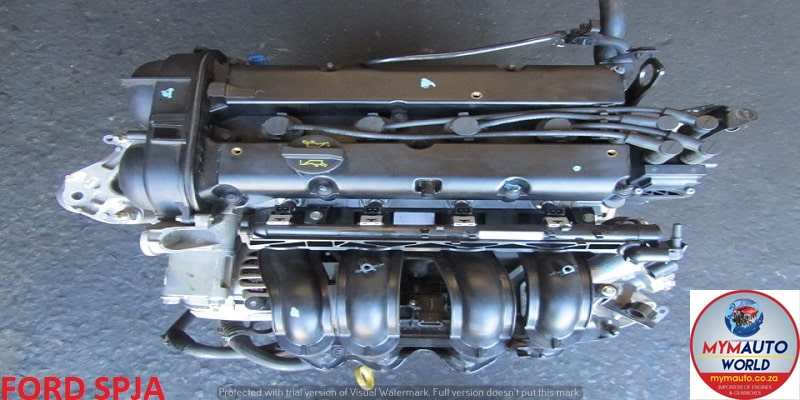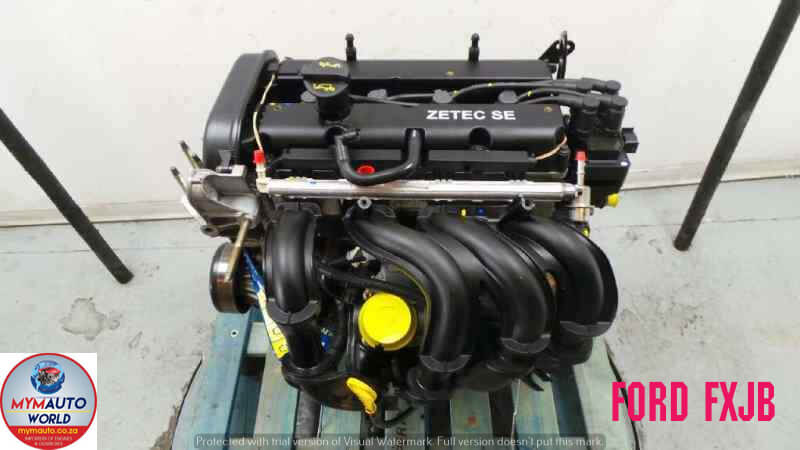How a Well-Maintained Ford Fiesta Engine Improves Vehicle Longevity
Checking Out the Advancement of Engines: From Timeless Styles to Modern Marvels
The advancement of engine modern technology stands for a substantial narrative in the background of development, noted by critical advancements that have continually redefined transport and industry. From the preliminary heavy steam engines that powered the Industrial Transformation to the introduction of internal burning engines that transformed movement, each phase has actually added to greater efficiency and ability. Presently, the change to electrical power symbolizes not only a technical shift but also a wider dedication to ecological sustainability. As we examine these turning points, one must consider just how the future of engine design may unravel, testing our understandings of power and performance.
The Birth of Engine Innovation
The advent of engine technology marked a critical minute in human advancement, changing energy conversion and transportation. The earliest engines emerged from the need to harness mechanical power for useful use, leading to the growth of gadgets that transformed different energy forms into motion (ford fiesta engine).
The development of the interior burning engine and the invention of the vapor engine catalyzed an extensive shift in industrial capacities. These engines not only boosted efficiency but also expanded the scope of human mobility, making it possible for extraordinary transport possibilities. The very early models laid the groundwork for the mechanical world, promoting the rise of sectors and improving social frameworks.
As engine styles evolved, they advanced and included innovative materials design principles, paving the way for modern-day developments - ford fiesta engine. The birth of engine modern technology fired up a relentless search of effectiveness and power, establishing the stage for the vibrant development of transport and industrial machinery that would adhere to
Steam Engines and Their Impact

The steam engine's impact was particularly obvious in the transportation sector (ford fiesta engine). Steam-powered locomotives promoted the fast activity of goods and people across substantial distances, properly diminishing the geographical barriers that had actually previously prevented trade and communication. Steamships reinvented naval travel, enabling for quicker and more reputable crossings of rivers and seas.
In industry, vapor engines powered factories, making it possible for automation and the surge of metropolitan facilities as hubs of economic task. This shift not just modified labor dynamics but also contributed to the emergence of a consumer-driven society. Heavy steam technology promoted advancements in design and manufacturing processes, laying the foundation for future innovations in engine layout. The legacy of vapor engines is extensive, mirroring a zero hour in human ingenuity and the relentless pursuit of development.
The Rise of Inner Combustion
Frequently outweighing heavy steam power, the rise of internal combustion engines marked a transformative shift in transport and sector throughout the late 19th and very early 20th centuries. The growth of these engines, defined by their capability to melt gas within the engine itself, made it possible for better performance and power compared to conventional vapor engines. Introducing creators such as Nikolaus Otto and Rudolf Diesel played crucial functions in refining engine designs, bring about widespread fostering in cars, watercrafts, and commercial equipment.
The interior combustion engine's portable size and fairly lightweight nature helped with the emergence of individual lorries, revolutionizing individual flexibility and improving urban landscapes. By making it possible for faster travel and the reliable transport of items, these engines militarized economic development and promoted globalization. The adaptability of gas choices, consisting of gas and diesel, further enhanced their allure, enabling varied applications throughout various sectors.
In spite of the environmental worries that would later on arise, the preliminary attraction of inner burning technology lay in its transformative potential. As culture embraced this technology, the foundation was laid for contemporary transportation systems, developing internal combustion engines as a keystone of commercial advancement and every day life throughout the 20th century.
Developments in Engine Effectiveness
As internal combustion engines became essential to transport and sector, the focus changed in the direction of enhancing their effectiveness to fulfill expanding needs for performance and sustainability. Technologies in engine layout, material science, and technology have actually considerably added to this development.
One major development is the advancement of turbocharging, which enables raised air consumption, causing even more complete gas burning and improved power outcome without enlarging engine size. In addition, variable valve timing systems have been applied to maximize engine efficiency across different RPM ranges, Bonuses therefore improving fuel efficiency.
The utilization of advanced fuel injection modern technologies, such as straight shot, has likewise played an important duty. This approach enables more specific control over the fuel-air mixture, promoting better combustion and minimizing discharges. Lightweight products, including aluminum and composite parts, have actually been embraced to lower general engine weight, leading to enhanced efficiency.
These improvements mirror a more comprehensive pattern within the automobile sector, where the harmony in between design advancement and environmental considerations drives the continuous quest for greater efficiency in internal combustion engines. Therefore, modern-day engines are now extra effective, cleaner, and efficient than in the past, leading the way for an extra sustainable future in transportation.
The Change to Electric Power
With expanding problems over environmental impact and fossil fuel dependency, the vehicle industry is experiencing a significant shift towards electrical power. This change is driven by a combination of technical improvements, regulatory stress, and changing customer choices. Electric cars (EVs) supply a compelling option to standard inner burning engines, boasting decreased greenhouse gas exhausts and reduced operating expense.
The surge of battery modern technology has been a game changer, with lithium-ion batteries coming to be extra efficient and cost-effective. Boosted power thickness and faster charging capacities have made EVs much more functional for day-to-day usage. Federal governments worldwide are carrying out motivations and setting ambitious targets for phasing out fossil gas vehicles, thereby accelerating the fostering of electric power.
As billing infrastructure expands and battery innovation continues to enhance, the shift to electrical power is positioned to reshape the vehicle landscape, advertising sustainability and advancement in the years to come. The future of transportation is electric, and the energy is obvious.
Final Thought
The evolution of engine technology stands for a substantial trajectory of technology that has profoundly affected transport and market. From the foundational heavy steam engines to the transformative internal burning engines, each growth has contributed to boosted flexibility and economic development. The current change toward electrical power underscores an essential commitment to sustainability, driven by developments in battery modern technology. This recurring development not just mirrors transforming societal demands however websites likewise highlights the capacity for a cleaner and extra effective future in engine design.
